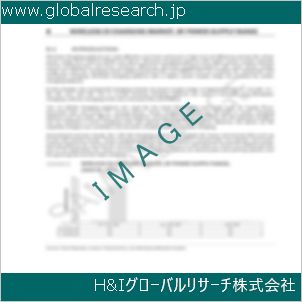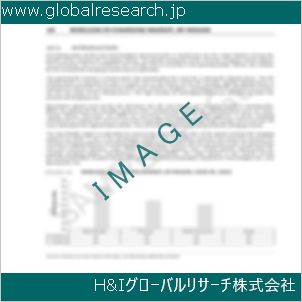Table of Contents
1 Industry Overview of Dimethylsulfide
1.1 Definition and Specifications of Dimethylsulfide
1.1.1 Definition of Dimethylsulfide
1.1.2 Specifications of Dimethylsulfide
1.2 Classification of Dimethylsulfide
1.3 Applications of Dimethylsulfide
1.3.1 Nuclear Application
1.3.2 Non-Nuclear Application
1.4 Industry Chain Structure of Dimethylsulfide
1.5 Industry Overview and Major Regions Status of Dimethylsulfide
1.5.1 Industry Overview of Dimethylsulfide
1.5.2 Global Major Regions Status of Dimethylsulfide
1.6 Industry Policy Analysis of Dimethylsulfide
1.7 Industry News Analysis of Dimethylsulfide
2 Manufacturing Cost Structure Analysis of Dimethylsulfide
2.1 Raw Material Suppliers and Price Analysis of Dimethylsulfide
2.2 Equipment Suppliers and Price Analysis of Dimethylsulfide
2.3 Labor Cost Analysis of Dimethylsulfide
2.4 Other Costs Analysis of Dimethylsulfide
2.5 Manufacturing Cost Structure Analysis of Dimethylsulfide
2.6 Manufacturing Process Analysis of Dimethylsulfide
3 Technical Data and Manufacturing Plants Analysis of Dimethylsulfide
3.1 Capacity and Commercial Production Date of Global Dimethylsulfide Major Manufacturers in 2023
3.2 Manufacturing Plants Distribution of Global Dimethylsulfide Major Manufacturers in 2023
3.3 R&D Status and Technology Source of Global Dimethylsulfide Major Manufacturers in 2023
3.4 Raw Materials Sources Analysis of Global Dimethylsulfide Major Manufacturers in 2023
4 Capacity, Production and Revenue Analysis of Dimethylsulfide by Regions, Types and Manufacturers
4.1 Global Capacity, Production and Revenue of Dimethylsulfide by Regions 2019-2024
4.2 Global and Major Regions Capacity, Production, Revenue and Growth Rate of Dimethylsulfide 2019-2024
4.3 Global Capacity, Production and Revenue of Dimethylsulfide by Types 2019-2024
4.4 Global Capacity, Production and Revenue of Dimethylsulfide by Manufacturers 2019-2024
5 Price, Cost, Gross and Gross Margin Analysis of Dimethylsulfide by Regions, Types and Manufacturers
5.1 Price, Cost, Gross and Gross Margin Analysis of Dimethylsulfide by Regions 2019-2024
5.2 Price, Cost, Gross and Gross Margin Analysis of Dimethylsulfide by Types 2019-2024
5.3 Price, Cost, Gross and Gross Margin Analysis of Dimethylsulfide by Manufacturers 2019-2024
6 Consumption Volume, Consumption Value and Sale Price Analysis of Dimethylsulfide by Regions, Types and Applications
6.1 Global Consumption Volume and Consumption Value of Dimethylsulfide by Regions 2019-2024
6.2 Global and Major Regions Consumption Volume, Consumption Value and Growth Rate of Dimethylsulfide 2019-2024
6.3 Global Consumption Volume and Consumption Value of Dimethylsulfide by Types 2019-2024
6.4 Global Consumption Volume and Consumption Value of Dimethylsulfide by Applications 2019-2024
6.5 Sale Price of Dimethylsulfide by Regions 2019-2024
6.6 Sale Price of Dimethylsulfide by Types 2019-2024
6.7 Sale Price of Dimethylsulfide by Applications 2019-2024
6.8 Market Share Analysis of Dimethylsulfide by Different Sale Price Levels
7 Supply, Import, Export and Consumption Analysis of Dimethylsulfide
7.1 Supply, Consumption and Gap of Dimethylsulfide 2019-2024
7.2 Global Capacity, Production, Price, Cost, Revenue, Supply, Import, Export and Consumption of Dimethylsulfide 2019-2024
7.3 USA Capacity, Production, Price, Cost, Revenue, Supply, Import, Export and Consumption of Dimethylsulfide 2019-2024
7.4 EU Capacity, Production, Price, Cost, Revenue, Supply, Import, Export and Consumption of Dimethylsulfide 2019-2024
7.5 China Capacity, Production, Price, Cost, Revenue, Supply, Import, Export and Consumption of Dimethylsulfide 2019-2024
7.6 Japan Capacity, Production, Price, Cost, Revenue, Supply, Import, Export and Consumption of Dimethylsulfide 2019-2024
8 Major Manufacturers Analysis of Dimethylsulfide
8.1 Manufacturer One
8.1.1 Company Profile
8.1.2 Product Picture and Specifications
8.1.2.1 Type I
8.1.2.2 Type II
8.1.2.3 Type III
8.1.3 Capacity, Production, Price, Cost, Gross and Revenue
8.1.4 Contact Information
8.2 Manufacturer Two
8.2.1 Company Profile
8.2.2 Product Picture and Specifications
8.2.2.1 Type I
8.2.2.2 Type II
8.2.2.3 Type III
8.2.3 Capacity, Production, Price, Cost, Gross and Revenue
8.2.4 Contact Information
8.3 Manufacturer Three
8.3.1 Company Profile
8.3.2 Product Picture and Specifications
8.3.2.1 Type I
8.3.2.2 Type II
8.3.2.3 Type III
8.3.3 Capacity, Production, Price, Cost, Gross and Revenue
8.3.4 Contact Information
8.4 Manufacturer Four
8.4.1 Company Profile
8.4.2 Product Picture and Specifications
8.4.2.1 Type I
8.4.2.2 Type II
8.4.2.3 Type III
8.4.3 Capacity, Production, Price, Cost, Gross and Revenue
8.4.4 Contact Information
8.5 Manufacturer Five
8.5.1 Company Profile
8.5.2 Product Picture and Specifications
8.5.2.1 Type I
8.5.2.2 Type II
8.5.2.3 Type III
8.5.3 Capacity, Production, Price, Cost, Gross and Revenue
8.5.4 Contact Information
…
9 Marketing Trader or Distributor Analysis of Dimethylsulfide
9.1 Marketing Channels Status of Dimethylsulfide
9.2 Traders or Distributors with Contact Information of Dimethylsulfide by Regions
9.3 Ex-work Price, Channel Price and End Buyer Price Analysis of Dimethylsulfide
9.4 Regional Import, Export and Trade Analysis of Dimethylsulfide
10 Industry Chain Analysis of Dimethylsulfide
10.1 Upstream Major Raw Materials Suppliers Analysis of Dimethylsulfide
10.1.1 Major Raw Materials Suppliers with Contact Information Analysis of Dimethylsulfide
10.1.2 Major Raw Materials Suppliers with Supply Volume Analysis of Dimethylsulfide by Regions
10.2 Upstream Major Equipment Suppliers Analysis of Dimethylsulfide
10.2.1 Major Equipment Suppliers with Contact Information Analysis of Dimethylsulfide
10.2.2 Major Equipment Suppliers with Product Pictures Analysis of Dimethylsulfide by Regions
10.3 Downstream Major Consumers Analysis of Dimethylsulfide
10.3.1 Major Consumers with Contact Information Analysis of Dimethylsulfide
10.3.2 Major Consumers with Consumption Volume Analysis of Dimethylsulfide by Regions
10.4 Supply Chain Relationship Analysis of Dimethylsulfide
11 Development Trend of Analysis of Dimethylsulfide
11.1 Capacity, Production and Revenue Forecast of Dimethylsulfide by Regions and Types
11.1.1 Global Capacity, Production and Revenue of Dimethylsulfide by Regions 2024-2029
11.1.2 Global and Major Regions Capacity, Production, Revenue and Growth Rate of Dimethylsulfide 2024-2029
11.1.3 Global Capacity, Production and Revenue of Dimethylsulfide by Types 2024-2029
11.2 Consumption Volume and Consumption Value Forecast of Dimethylsulfide by Regions, Types and Applications
11.2.1 Global Consumption Volume and Consumption Value of Dimethylsulfide by Regions 2024-2029
11.2.2 Global and Major Regions Consumption Volume, Consumption Value and Growth Rate of Dimethylsulfide 2024-2029
11.2.3 Global Consumption Volume and Consumption Value of Dimethylsulfide by Types 2024-2029
11.2.4 Global Consumption Volume and Consumption Value of Dimethylsulfide by Applications 2024-2029
11.3 Supply, Import, Export and Consumption Forecast of Dimethylsulfide
11.3.1 Supply, Consumption and Gap of Dimethylsulfide 2024-2029
11.3.2 Global Capacity, Production, Price, Cost, Revenue, Supply, Import, Export and Consumption of Dimethylsulfide 2024-2029
11.3.3 USA Capacity, Production, Price, Cost, Revenue, Supply, Import, Export and Consumption of Dimethylsulfide 2024-2029
11.3.4 EU Capacity, Production, Price, Cost, Revenue, Supply, Import, Export and Consumption of Dimethylsulfide 2024-2029
11.3.5 China Capacity, Production, Price, Cost, Revenue, Supply, Import, Export and Consumption of Dimethylsulfide 2024-2029
11.3.6 Japan Capacity, Production, Price, Cost, Revenue, Supply, Import, Export and Consumption of Dimethylsulfide 2024-2029
12 New Project Investment Feasibility Analysis of Dimethylsulfide
12.1 New Project SWOT Analysis of Dimethylsulfide
12.2 New Project Investment Feasibility Analysis of Dimethylsulfide
13 Conclusion of the Global Dimethylsulfide (CAS 75-18-3) Industry 2024 Market Research Report
| ※参考情報 硫化ジメチル(Dimethylsulfide、CAS番号75-18-3)は、化学式C₂H₆Sで表される有機化合物です。この化合物は、硫黄を含む有機化合物の一種であり、特異な臭気を有することで知られています。以下にその定義、特徴、種類、用途、関連技術などについて詳しく説明いたします。 まず、硫化ジメチルの定義についてですが、これは二つのメチル基(-CH₃)が硫黄原子(S)に結合した形の分子であり、無色の揮発性液体です。常温で気体として存在しますが、冷却することで液体に変わります。一般的には、甘いかつ少し腐ったような匂いを持つため、鼻に強く残る臭気として感じられることが多いです。この特有の香りは、食品や環境中に存在する場合には一部の人にとって不快感を与えることがあります。 次に、硫化ジメチルの特徴について述べます。硫化ジメチルは、揮発性や水に対する溶解性の低さが特筆されます。水に対する溶解度は限られていますが、有機溶媒には良く溶けます。また、この化合物は生物由来の物質としても広く認識されており、特に藻類やプランクトンによって生成されます。海洋では、硫化ジメチルは微生物の活動により自然に生成され、気体として大気中に放出されます。このため、硫化ジメチルは海洋の生態系において重要な役割を果たしています。 硫化ジメチルにはいくつかの用途があります。例えば、主に化学工業において、中間体や溶媒として利用されます。特に、農薬や医薬品、香料製品などの合成において重要な役割を果たしています。また、食品の香料としても使用されることがあり、特に貝や魚類の風味を引き立てる複合的な香りを生成するために利用されます。さらに、シス-2-エン-1-オールやロジウム触媒を用いた反応では、硫化ジメチルが重要な役割を果たします。 さらに、硫化ジメチルは新能源技術においても注目されています。生物由来のエネルギー源としての可能性があり、バイオマスの分解過程で生成されることから、再生可能な資源としての利用が期待されています。このようなバイオマスを利用したエネルギーシステムの開発は、持続可能な社会の実現に向けた重要なステップとなります。 硫化ジメチルはまた、いくつかの関連技術においても重要です。例えば、ガス分析技術において、この化合物の濃度を測定することは、環境モニタリングや公害対策、さらには食品の品質管理において重要な役割を果たします。硫化ジメチルの存在は、特に海洋からの大気中への流出の指標として用いられ、環境学の研究において参考にされることが多いです。 また、硫化ジメチルは、ある種の臭気計測技術やセンサー技術においても応用されることがあります。特に、特定の化学センサーを使用して、環境中の硫化ジメチルの濃度を特定することで、その存在が環境中での微生物活動や有機物の分解といった生態系の動向にどのように関連しているかを理解することができます。 最後に、硫化ジメチルに関する注意点やリスクについても触れておくことが重要です。硫化ジメチルは、特定の条件下で有害な影響を及ぼす可能性があるため、取り扱いにあたっては十分な注意が必要です。特に高濃度の場合には、吸入や皮膚接触が人体に害を及ぼす可能性があります。このため、工業的な利用に際しては適切な安全対策や防護具の使用が求められます。 以上のように、硫化ジメチルは多岐にわたる特性と用途を持ち、様々な分野で活用されています。その特有の香りや生物由来の成分としての重要性から、今後も注目される化合物であると言えるでしょう。持続可能な社会を実現するための研究や技術の発展において、硫化ジメチルは一つの鍵となる可能性があります。 |
❖ 免責事項 ❖
http://www.globalresearch.jp/disclaimer












